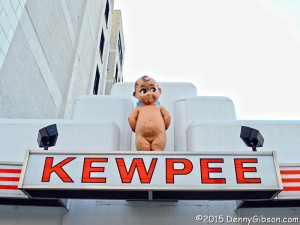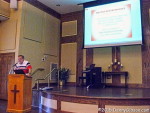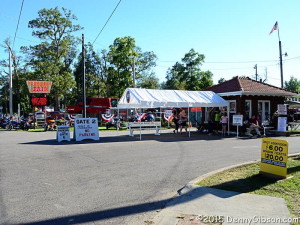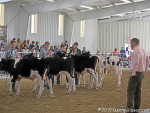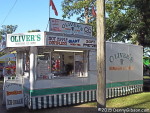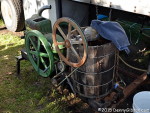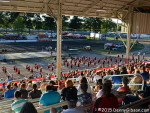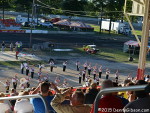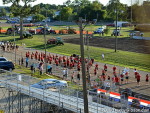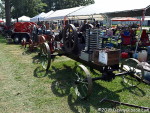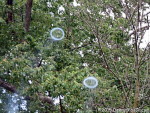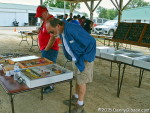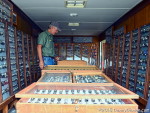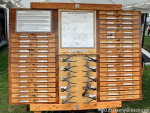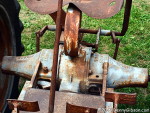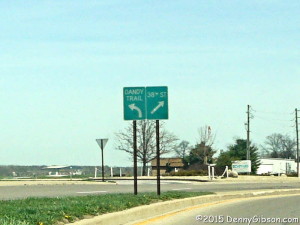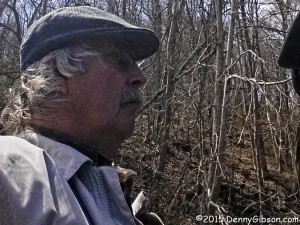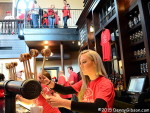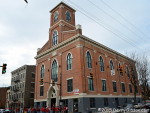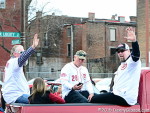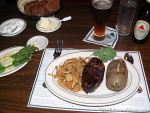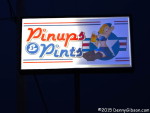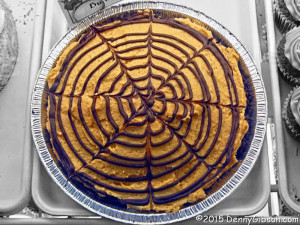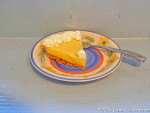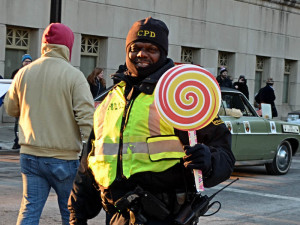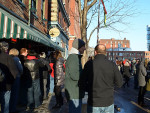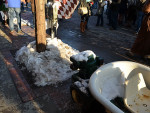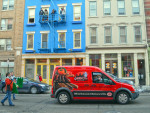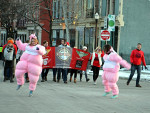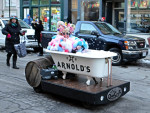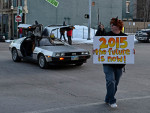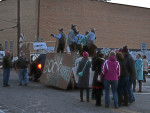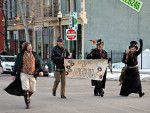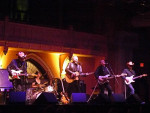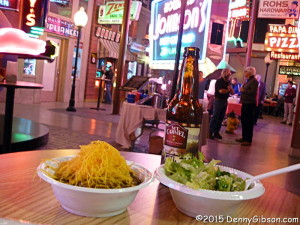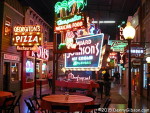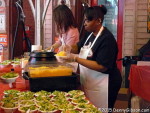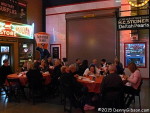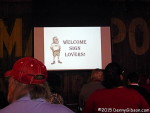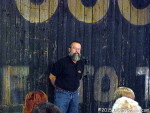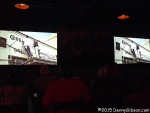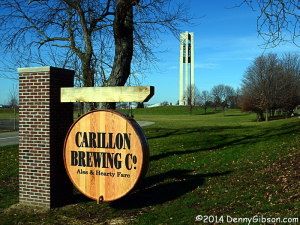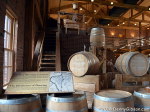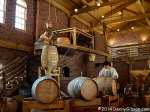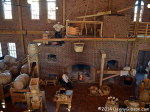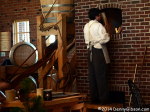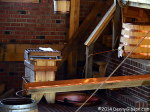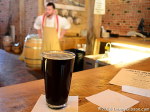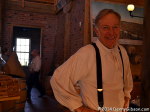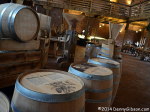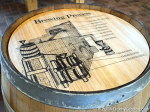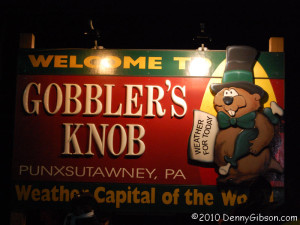 Groundhog Day has long been one of my favorite holidays. In fact, attending America’s biggest Groundhog Day event in Punxsutawney, PA, was among the first things I did with the newly available time that retirement brought. The photo at right was taken at 4:58 AM, February 2, 2010. Sunrise was more than two hours away and the temperature was four degrees Fahrenheit. I had a good time and I’m glad I went but the experience did not lead to plans for an annual return. Standing outside in pre-dawn single-digit temperatures is something I prefer to discuss in past tense only.
Groundhog Day has long been one of my favorite holidays. In fact, attending America’s biggest Groundhog Day event in Punxsutawney, PA, was among the first things I did with the newly available time that retirement brought. The photo at right was taken at 4:58 AM, February 2, 2010. Sunrise was more than two hours away and the temperature was four degrees Fahrenheit. I had a good time and I’m glad I went but the experience did not lead to plans for an annual return. Standing outside in pre-dawn single-digit temperatures is something I prefer to discuss in past tense only.
I credited my original fondness for Groundhog Day to a belief that it had no religious connections and was basically folklore that had been adopted by some Pennsylvanians largely to promote silliness. While both of those claims are sort of true, there is more to it. I started to doubt the “no religious connections” when I discovered that America’s Groundhog Day shares its February 2 date with Christianity’s Candlemas. But sharing a date does not a connection make and there are no direct ties apparent between Groundhog Day and any of the three events (presentation of the child Jesus, Jesus’ entry into the temple, and Mary’s purification) Christians attribute to the day.
February 1 is also a day recognized by Christians. It is the day that Saint Brigid of Ireland is reported to have died and is celebrated as her feast day. Before Saint Brigid was born (in 451 they say) a Gaelic festival was celebrated about this time to honor a goddess also named, perhaps by coincidence though probably not, Brigid. I have to say “about this time” because man-made calendars had not yet taken over and feast days were not yet tied to specific numbers on pages. Brigid’s was associated with a point halfway between Winter Solstice and Vernal Equinox called Imbolc which happens near the beginning of what we call February. In 2016 it occurs at 4:30 EST February 4.
Without donut shops and corner diners, it isn’t clear where ancient Irish farmers gathered to talk about the weather but it’s a safe bet that they did. Around Imbolc, the coming spring would have been a big topic. Farmers without donut shops and cable television are quite observant of their environment and they no doubt noticed that bright clear days in the middle of winter were usually a little colder than cloudy ones. With Imbolc being the most “middle of winter” you can get, giving some special significance to the weather on that day was likely fairly natural. That’s about as close to science that the groundhog and shadow story gets.
I’m guessing that making a determination at sunrise was also fairly natural. Even if those early farmers were capable of determining Imbolc’s exact moment — and I’m not saying they weren’t — in those years when it did not occur during the daytime they weren’t about to get up in the middle of the night to see if the sun was shining. The crack of dawn probably seemed about right.
So there really are no direct connections between Groundhog Day and religion and there is plenty of silliness in its fairly recent (1887) use to bring fame to a small Pennsylvania town but its timing is firmly linked to the workings of the solar system and there is a tiny bit of logic in it being a day to make weather predictions. If nothing else, the days around Imbolc are most likely the coldest of the year meaning there’s a good chance that it’s all up-thermometer from here.
My 2010 Punxsutawney visit is here. I will, as usual, celebrate Groundhog Day on Tuesday by consuming pork sausage at some point. I have no plans to be awake at 4:30 Thursday to observe Imbolc.

 Puckett’s Grocery & Restaurant is the target of this trip but there will be some stops along the way. Puckett’s is in Leiper’s Fork, Tennessee, which, for me, is a little beyond Nashville. I have Music City evenings planned for the Bluebird Cafe and the Grand Ol’ Opry at Ryman Theater before my evening with “America’s Route 66 Band”, The Road Crew, at Puckett’s. You know the saying, “When you come to a Road Crew in the Fork, take it.”
Puckett’s Grocery & Restaurant is the target of this trip but there will be some stops along the way. Puckett’s is in Leiper’s Fork, Tennessee, which, for me, is a little beyond Nashville. I have Music City evenings planned for the Bluebird Cafe and the Grand Ol’ Opry at Ryman Theater before my evening with “America’s Route 66 Band”, The Road Crew, at Puckett’s. You know the saying, “When you come to a Road Crew in the Fork, take it.”